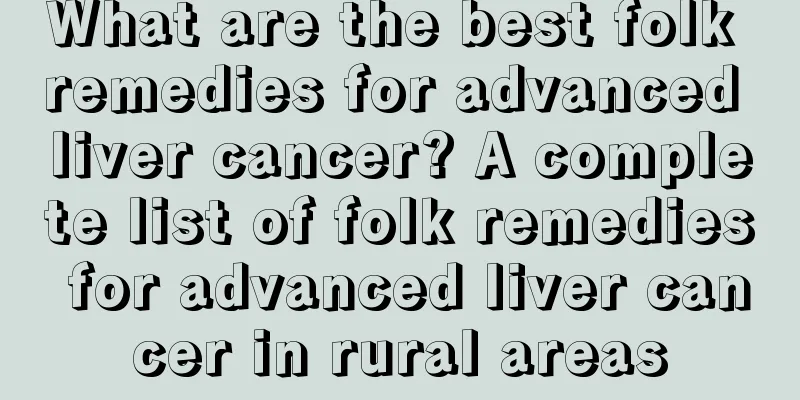The treatment of atypical pneumonia must not be taken lightly

|
Although SARS happened many years ago, many people still have a fear about it, worrying that they will contract the disease or atypical pneumonia for some reason. In fact, with the development of medical technology, the treatment of atypical pneumonia is no longer a problem. Experts say that general treatment, oxygen therapy, the application of glucocorticoids, the application of antibiotics, and the application of antiviral drugs are very effective. 1. General treatment (1) Rest in bed. (2) Avoid severe coughing. If the cough is severe, give antitussive drugs; if the patient has phlegm, give expectorants. (3) For patients with a fever exceeding 38.5°C, antipyretic analgesics can be used. Children should avoid using aspirin because it may cause Reye syndrome. Alternatively, physical cooling such as ice packs and alcohol baths can be used. (4) If there is damage to the functions of organs such as the heart, liver, and kidneys, appropriate treatment should be given. 2. Oxygen therapy If shortness of breath occurs, continuous oxygen inhalation via nasal cannula or mask should be given. (1) Nasal cannula or nasal plug is a common and simple method of oxygen administration. It is suitable for low-concentration oxygen administration and is easy for patients to accept. (2) Mask oxygen supply The mask has an adjustment device that can adjust the oxygen concentration in the mask. No humidification is required and the oxygen consumption is relatively low. (3) Tracheal intubation or incision has a good effect of jet oxygenation through the intubation or incision, and is conducive to the discharge of respiratory secretions and maintaining airway patency. (4) Oxygen delivery via ventilator is the best route and method of oxygen therapy and is often used to rescue critically ill patients. 3. Application of glucocorticoids Treatment with glucocorticoids should have one of the following indications. (1) There are severe symptoms of poisoning, with high fever lasting for 3 days. (2) The lung shadow area expands by more than 50% within 48 hours. (3) Acute lung injury (ALI) or ARDS. 4. Application of Antimicrobial Drugs In order to prevent and treat bacterial infections, antibiotics should be used to cover common pathogens of community-acquired pneumonia. Macrolides (such as azithromycin), fluoroquinolones, β-lactams, tetracyclines, etc. can be used clinically. If sputum culture or clinical results indicate methicillin-resistant Staphylococcus aureus infection or penicillin-resistant Streptococcus pneumoniae infection, (demethyl) vancomycin can be used. 5. Antiviral drugs There is no proven effective antiviral drug treatment so far, but antiviral drugs can be tried during treatment. 6. Treatment of severe cases (1) Strengthen dynamic monitoring of patients: admit them to the intensive care unit as much as possible. (2) Use non-invasive positive pressure ventilation (NPPV). (3) After NPPV treatment, if oxygen saturation does not improve satisfactorily, invasive positive pressure mechanical ventilation should be performed promptly. (4) For cases of ARDS, invasive positive pressure mechanical ventilation should be used directly; if shock or MODS occurs, appropriate supportive treatment should be given. |
<<: How to prevent rheumatic bone pain?
>>: What are the clinical manifestations of rheumatic fever?
Recommend
Can I get liver cancer if my liver is normal due to B-ultrasound? I found liver cancer after three tests
Liver cancer is highly malignant and patients oft...
Is honey effective in removing scars?
Scars are evidence left behind after people's...
Is Yangxiuqiu flower poisonous
Hydrangea is also known as 'Eight Hydrangeas&...
What are the specific causes of ovarian tumors?
Ovarian tumors are a very sad thing for female fr...
What is hazelnut
Speaking of hazelnuts, I believe many friends hav...
Conservative treatment of myocardial infarction
The treatments for myocardial infarction are diff...
Beware of the side effects of collagen injections!
Collagen is very important for the human body. A ...
What are the magical effects of Cordyceps Flower Chicken Soup
The effect of Cordyceps flowers in chicken soup i...
Can anemia cause splenomegaly?
The spleen is an important organ in the human bod...
What are the methods of biological treatment for melanoma
Melanoma is a type of malignant tumor with a very...
What causes lymphoma symptoms
When it comes to cancer, everyone knows that it i...
How much does fibroid removal surgery cost
How much does it cost to remove a fibroid? Most p...
What can I add to a mattress to make it harder
Many friends with bad waists don’t like sleeping ...
What is the cervical fluid dark area
There are many types of gynecological diseases an...
Does eating fish reduce the risk of liver cancer? Precautions for preventing liver cancer
Japanese researchers successfully create human li...









